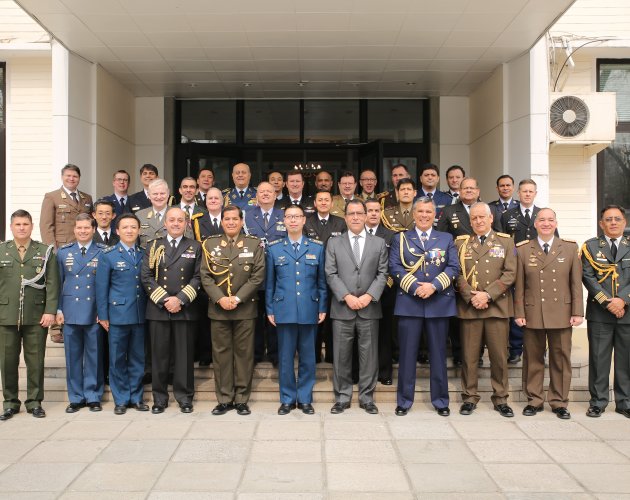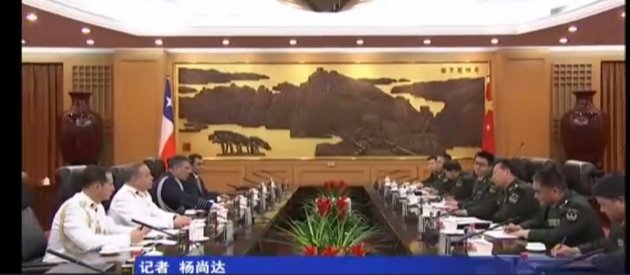Columna de Opinión de Osvaldo Rosales (Cepal) en el periódico Chian Daily de China
Referido a las relaciones entre China y América Latina
CHINA DAILY
New phase in Sino-Latin American ties
By Osvaldo Rosales (China Daily)Updated: 2014-07-21 07:24
President Xi Jinping is on his second visit to Latin America seeking to start a new phase in China's relationship with Latin America and the Caribbean (LAC). In recent years, this relationship has been characterized by dynamic trade, an upturn in investment, a healthy exchange of high-level visits and the beginning of institutional dialogue.
After offering to deepen the cooperation agenda during a visit to the Economic Commission for Latin America and the Caribbean headquarters in June 2012, Chinese leaders organized the China-LAC Ministers of Agriculture Forum in June 2013. And the ECLAC-China Cooperation Forum is likely to be held soon in Beijing.
Between 2000 and 2013, the trade volume between China and LAC multiplied 21-fold, from $12 billion to $250 billion. China has become one of the most important trading partners of the region. In fact, it is already the second provider of imports and, in 2015, could surpass the European Union as the second-largest export market for LAC. It is already the top export market for Brazil, Chile and Peru and the second-largest for Colombia, Cuba, Uruguay and Venezuela.
However, this dynamic relationship faces some problems. The LAC region, except for Venezuela, Brazil and Chile, has a trade deficit with China. This is particularly acute in manufacturing where the deficit affects all the region's economies and, in some cases, exceeds 4 to 5 percent of their GDP. This is the result of the LAC's exports pattern, which is highly concentrated in low-processed commodities.
Of the total LAC exports to China, 70 percent are raw materials and 24 percent products manufactured from natural resources. Exports are also highly concentrated given that only five products account for 90 percent or more of the exports for 14 LAC countries. Moreover, the number of LAC companies that export their products to China is relatively small, reflecting a pattern different from the LAC exports to other markets.
Chinese investment in LAC has grown, but it is still too low in relation to the trade level. It is also highly concentrated in natural resources and a significant part of the investment involves "tax havens".
These concerns have been well received by the Chinese leadership, which has laid the foundation for working out a cooperation agenda that will be conducive to diversifying exports from LAC to China, establishing alliances between trade and technological enterprises on both sides of the Pacific, fostering technological upgrade of industry and the agriculture sector, and stimulating Chinese investment in infrastructure which, aside from facilitating trade with China, will also boost intra-regional trade.
The economic reforms underway in China do offer significant opportunities to diversify LAC's exports. But LAC countries have to change their domestic policies for that. The challenge is how to link a domestic agenda focused on innovation and competitiveness with renewed trade and investment ties with China.
LAC countries must first strengthen and harmonize their policies to stimulate productivity, innovation, education, training programs for workers, infrastructure and logistics, and attract foreign direct investment and support small and medium-sized enterprises. With that policy basis, the next step would be to agree upon a regional dialogue and cooperation agenda with China that can face challenges and cash in on the opportunities on offer.
Beyond the obvious differences, China and LAC face similar challenges in building more inclusive societies that are supported by a sustainable productive transformation and anchored in innovation. This creates an interesting area for cooperation by exchanging experiences and in debating which policies are best suited to reach these objectives. It is important to understand the projections of the current reform cycle in China in order to take advantage of the new trade and investment opportunities that it will create. It is likely that the new overarching theme of this new phase of China-LAC relations will be increased investment.
The upturn of Chinese investment abroad will be more focused on private enterprises seeking new and more efficient markets - thus favoring the development of productive, technological and trade alliances between Chinese and LAC enterprises. If these alliances can rely on support from public policies in LAC, they could boost industrialization and management of local and regional supply chains, which, in turn, will strengthen the trade and investment links between China and LAC.
That would not only help modify the Latin American export pattern, but also stimulate intra-regional trade in LAC. Chinese investment in manufacturing, infrastructure and services in LAC will be welcomed and the best route for that continues to be alliances with local investors. Such Chinese investment could be fundamental in modernizing LAC's industries by contributing to productivity, export diversification, fostering intra-regional trade and, finally, regional integration based on value chains.
These issues are fundamental for the regional cooperation agenda with China and could be taken up at the next ECLAC-China Cooperation Forum.
The author is director of International Trade and Integration, Economic Commission for Latin America and the Caribbean.
Fuente: http://www.chinadaily.com.cn/opinion/2014-07/21/content_17861499.htm




